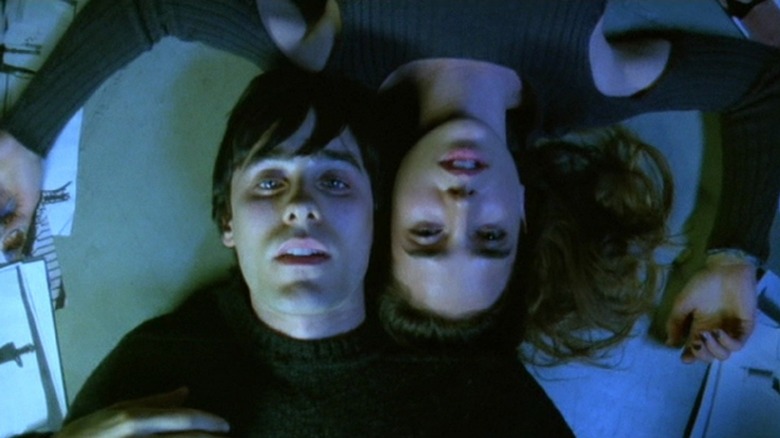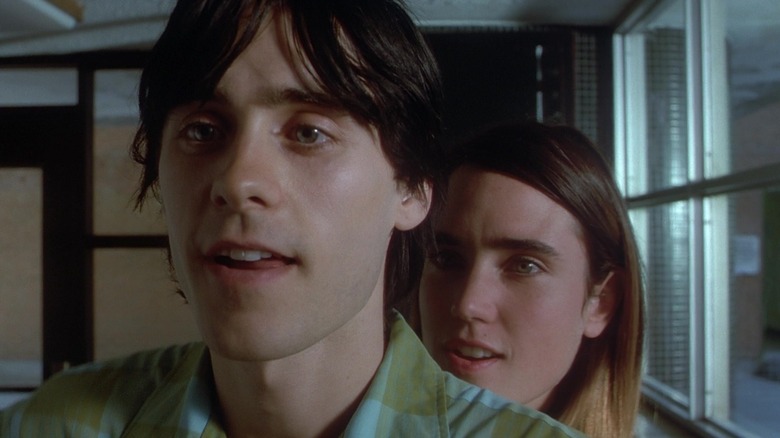Requiem For A Dream's NC-17 To R-Rating Controversy Explained
For decades, the subject of addiction and the dark places it can take someone has been a playground for some of the most disturbing stories on the silver screen. From Nicolas Cage's turn as a self-destructive alcoholic in "Leaving Las Vegas" to Brendan Fraser's role as a morbidly obese professor in "The Whale," addiction stories are generally woeful and often have less than happy endings.
Still, even in this kind of company, Darren Aronofsky's "Requiem for a Dream" stands out. From the opening moments that see Harry (Jared Leto) stealing his mother, Sarah's (Ellen Burstyn) television set to pawn for drugs to the brutal closing montage of the film, Aronofsky's sophomore effort is a harrowing journey.
As such, even the R-rated version of the film hits like a truck. While "Requiem for a Dream" was originally rated NC-17, an R-rated cut was also released that left out some of the film's more lurid and upsetting shots. Most of the cuts and changes were, naturally, made to the scene in which Marion (Jennifer Connelly) decides to perform sex acts in front of a room full of jeering men to feed her addiction. Otherwise, the film remained mainly the same.
If you or anyone you know is struggling with addiction issues, help is available. Visit the Substance Abuse and Mental Health Services Administration website or contact SAMHSA's National Helpline at 1-800-662-HELP (4357)
The team behind the film tried to use the rating to their advantage
As Eric Watson, a producer on "Requiem for a Dream," told Vulture in 2020, the decision makers for the MPAA were sympathetic to what Darren Aronofsky was trying to do with his adaptation of Hubert Selby Jr.'s novel. Still, they ultimately couldn't give it an R-rating as is.
"We had an appeal screening when they gave us an NC-17 rating, and we tried to peer into a very murky world — the closed-door group of people that makes that decision," Watson recalled. "They did say, 'Hey, we know this movie would be more effective than what you're setting out to do for a rated R, but we just can't do it, sorry.'"
It's easy to see why "Requiem for a Dream" raised so many eyebrows when it was initially released, particularly for the time. Still, while purists will always opt for the unrated director's cut, viewers who see either version of the film are unlikely to forget it.
Either way, Watson said that the taboo nature of the rating actually helped the film in some ways. "[O]n the positive side, controversy creates publicity. And so we definitely milked the publicity of having the NC-17 rating as much as we could," the producer said.

